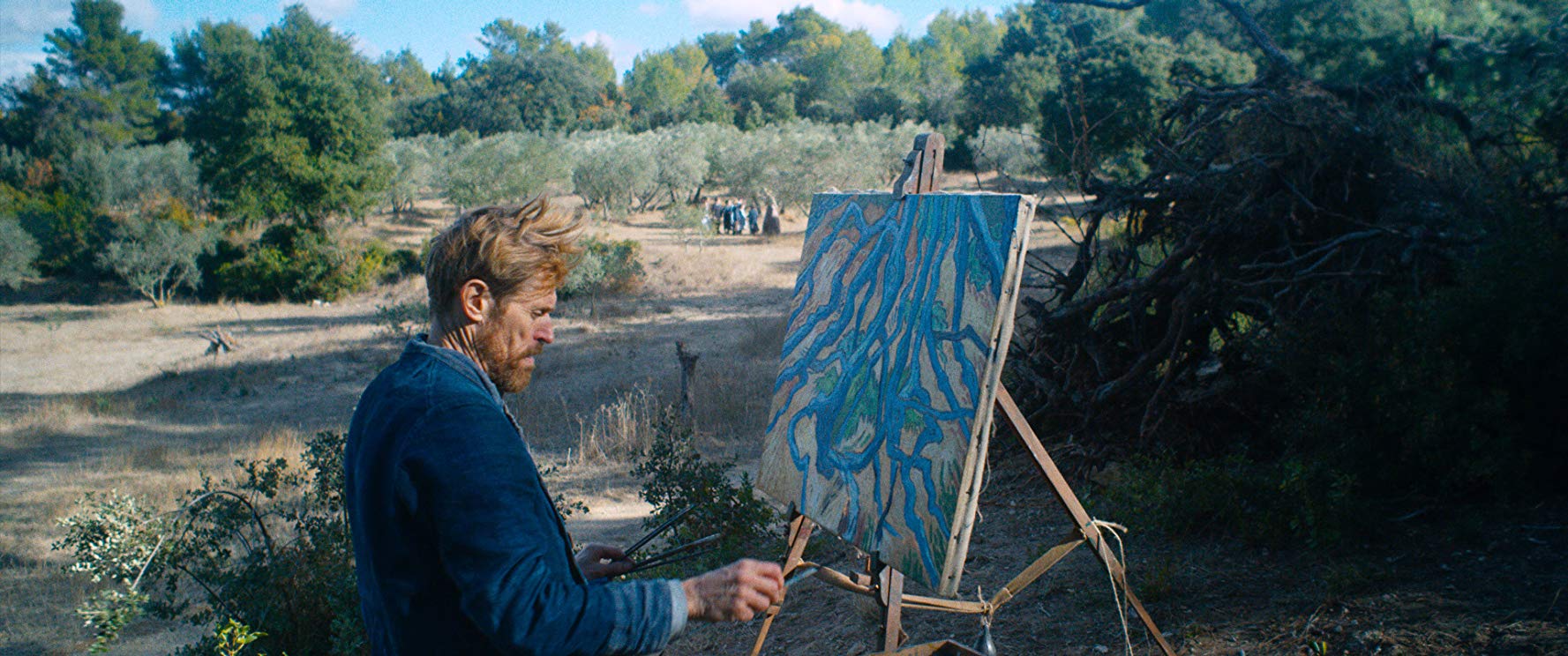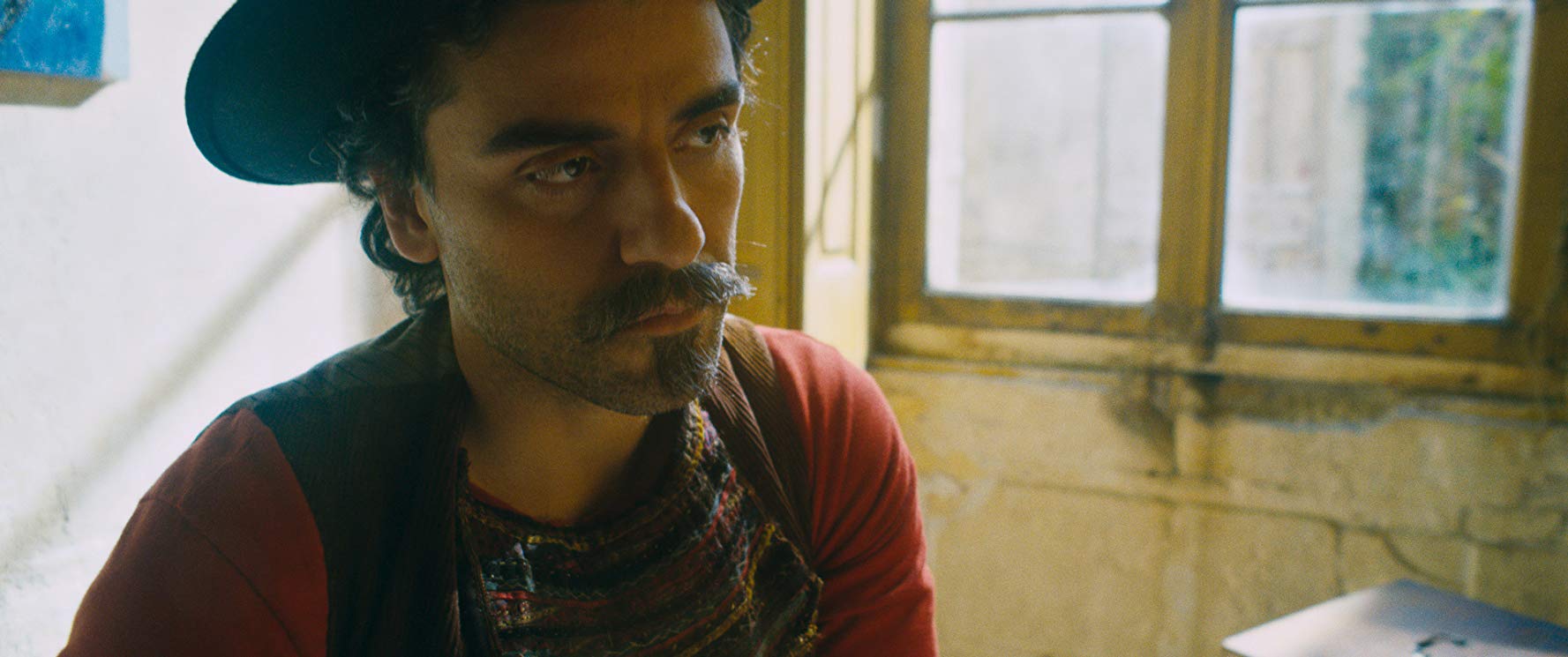By Miles Jackson, Third Year, Film & English
The experienced actor belies his age to play the famed artist superbly and Julian Schnabel’s biopic has its moments, mostly owed to its cast, despite inconsistencies.
From Doctor Who (2010) to Tupac Shakur, Vincent van Gogh has been immortalised, mythologised and dissected in art for time immemorial. The ultimate artist’s artist, Van Gogh’s equally tragic life and death has been adapted for film twice in just the past three years - first in the pretty but pointless Loving Vincent (2017) and now in Julian Schnabel’s At Eternity’s Gate.
Despite the litany of cultural depictions of the artist, a truly great film about Van Gogh is yet to materialise. Schnabel’s film - in spite of a myriad of cinematic techniques that strive to subjectively place the audience directly in the artist’s head - is a mixed bag of experiments that ultimately fail to create a truly transcendent portrait of the artist.
YouTube / CBS Films
Schnabel is himself a painter, one far more successful than Van Gogh ever was in his lifetime; indeed, At Eternity’s Gate is a biopic that refreshingly sidelines hitting the key narrative events in favour of a more impressionistic vision of Vincent. There’s little sense of cohesion or story to van Gogh’s mental breakdowns, his friendship and rivalry with fellow artist Paul Gauguin, and his artistic progression. This loose, freewheeling structure is how all biopics should be: vivid sketches and vignettes that don’t arbitrarily impose an overarching narrative on a lifetime where one may not exist.
Such disregard for narrative convention extends to the film’s visuals. There’s little of the stately stillness that makes the biopic cinema’s most boring genre, with Schnabel attempting to constantly place the audience in Van Gogh’s point-of-view by a relentless use of inner monologue, first-person POV shots and bizarre camera tricks such as blurring the edges of a frame the way one might on an ‘arty’ Instagram post.

Photo courtesy of CBS Films
This experimentalism is certainly a nice change, but not entirely effective. For instance, the use of black and white for two shots in the film is so underused as to be incoherent, whilst lines of dialogue repeating over and over again mere seconds after they are said is more irritating than profound. Likewise, the sickly yellow sepia filters that adorn the film’s final half-hour don’t really do justice to the lovely, sad sunglows that fill Van Gogh’s paintings. Still, the totally restless handheld camerawork and frenetic, choppy editing often succeed in creating a sense of anxiety that accurately reflects the physiological side of mental health conditions.
The film is at its most serene and poetic in its silent moments. Long takes of Van Gogh scaling the Arles landscape where he would create his most famous paintings attain a hypnotic quality as we merely view the artist choosing what to paint and then doing it. Too often, however, Schnabel undercuts the humble pleasantries of his film with sound; an overbearing piano-led score attempts to instill an operatic awe not present in the images themselves. Likewise, scenes of dialogue between Van Gogh and the various other characters peppered throughout the film are sketchy at best. The long, meditative discussions on the meaning and intent behind art are interesting to watch to a point, but are rarely rooted in character and conflict. More often than not they feel like a History of Art lecture.
At Eternity’s Gate by Vincent van Gogh is a painting based on a lithograph he made as a younger man. The work inspired the title of the 2018 film about the artist's final years, starring Willem Dafoe.
— Tate (@Tate) 22 January 2019
The EY Exhibition: #VanGogh and Britain opens 27 March: https://t.co/DYFVrfiy6G pic.twitter.com/BvxcZUS1BU
Still, even at its most frustratingly vague, the film retains a watchability owing to its performances. At the heart of the film is a searing performance by Willem Dafoe as Vincent. Playing a character 23 years younger than him, Dafoe seamlessly embodies the character, his rubbery face exuding paranoia and hurt. Despite being surrounded by actors many decades younger than him, he retains a vigour and curiosity that belies his elderliness. It is an immense yet invisible performance. The horde of famous faces around him do fine work, too, with Rupert Friend in particular putting in a moving performance as Vincent’s sympathetic yet powerless-to-help brother Theo.
Even so, the central problem with At Eternity’s Gate is that, for all its affecting individual parts, it never amounts to anything greater. Schnabel’s conclusions on Van Gogh, both as a man and an artist, feel somewhat shallow. Is it enough to depict Van Gogh as a mentally ill man who produced great art?

Photo courtesy of CBS Films
I’m not sure that it justifies the piece’s endless rambling; though it strives for profundity, it often falls short. The existence of a biopic that strives for something more impressionistic and unconventional than typical ‘Oscar bait’ should be celebrated, of course. But compared to other films of its ilk, such as Mike Leigh’s mesmerising Mr. Turner (2014), it still feels as though we’re waiting on a truly magical interpretation of Vincent van Gogh.
At Eternity's Gate is showing at select cinemas nationwide.
Featured Image courtesy of CBS Films
Is this the best embodiment of the great Dutch artist?
Facebook // Epigram Film & TV // Twitter








